Recommendations for restaurants near Rua Augusta Street with the highest ratings on Tripadvisor.

- Cervejaria Paco Real (European, Portuguese)



Touch each icon to get the information.
How to get there
1. Bus 714: This route connects Lisbon Airport with Praça do Comércio, passing through the city center and Avenida da Liberdade. View bus stops on the map
2. Bus 728: This route runs from Martim Moniz to Praça do Comércio, passing through Santa Apolónia train station and the Alfama district.View bus stops on the map
3. Bus 732: This route connects Oriente Station with Praça do Comércio, passing through Avenida Infante Dom Henrique and the Parque das Nações area.View bus stops on the map
4. Bus 737: This route goes from Campolide to Praça do Comércio, passing through Marquês de Pombal and Avenida da Liberdade. View bus stops on the map
5. Bus 746: This route connects Belém train station with Praça do Comércio, passing through Belém Tower and Jerónimos Monastery.View bus stops on the map
Download PDF of bus routes and stops
Here are the steps to get to Rua Augusta using the underground in Lisbon:
1. Check your current location and locate the nearest underground station. You can use a maps app or ask the locals to find the most convenient station.
2. Head to the underground station and look for signs or directions that guide you to the blue line of the Lisbon underground. The blue line is also known as the Linha Azul or Line 1.
3. Make sure your destination is the “Baixa-Chiado” station. This station is located at the intersection of the blue and green lines of the underground and is the closest to Rua Augusta.
4. Board the underground train towards “Baixa-Chiado” and enjoy your journey on the underground to that station.
5. Once at the “Baixa-Chiado” station, follow the signs to the exit. You may find signs directing you towards “Rua Augusta”.
6. Upon exiting the station, you will be close to Rua Augusta. Continue walking in the direction indicated by the signs or ask passersby to make sure you are on the right path.
7. Enjoy your stroll along Rua Augusta, an iconic street in Lisbon filled with shops, restaurants, and tourist attractions.
Remember to check the timings and any possible service modifications for the underground as they may vary depending on the day of the week and city events. Enjoy your visit to Rua Augusta!

Above in the photo gallery you will find the map in real size.
Note: Please use the following instructions only if you are located on the outskirts of Lisbon. If you are already in the city center or following itinerary number 1, please disregard these train directions.
From any point on the line heading to Santa Apolónia:
Take the train towards Santa Apolónia.
Get off at Santa Apolónia station.
Inside Santa Apolónia station, look for the entrance to the metro (blue line).
Take the metro towards Baixa-Chiado.
Get off at Baixa-Chiado station.
Exit the metro station and follow the signs directing you to Rua Augusta.
Walk along Rua Augusta until you reach the Praça do Comércio.
Continue straight and you will see the Arco da Rua Augusta at the end of Rua Augusta.
From any point on the Cascais line:
Take the train on the Cascais line heading to Cais do Sodré.
Get off at Cais do Sodré station.
From Cais do Sodré station, take the metro (green line) towards Baixa-Chiado.
Get off at Baixa-Chiado station.
Exit the metro station and follow the signs directing you to Rua Augusta.
Walk along Rua Augusta until you reach the Praça do Comércio.
Continue straight and you will see the Arco da Rua Augusta at the end of Rua Augusta.
From any point on the Sintra line:
Take the train on the Sintra line heading to Rossio.
Get off at Rossio station.
Follow the signs directing you to Rua Augusta.
Walk along Rua Augusta until you reach the Praça do Comércio.
Continue straight and you will see the Arco da Rua Augusta at the end of Rua Augusta.
Please note that once you arrive at the respective station, you should follow the previously mentioned directions to reach Rua Augusta.
Explore the beauty of Rua Augusto with ease!
Simply click on the ‘Take me to Rua Augusto’ button below, and it will automatically open the Google Maps application on your mobile device or computer.
The starting location will already be configured, so you just need to follow the step-by-step directions provided by Google Maps. Enjoy a hassle-free stroll as you’re guided through the best routes to reach this iconic street. Exploring the area couldn’t be easier with the help of Google Maps!”
Please make sure to add the appropriate button on your website with the necessary functionality to open the Google Maps application with the preconfigured location.
Once you arrive at the site, listen to a brief explanation of the history of the place.
- Audio in English
- Audio en français
- Audio en Español
- Audio auf Deutsch





Choose Your Language.
- Reading in English
- Lire en Français
- Lectura en Español
- Lesen auf Deutsch
Rua Augusta holds a significant place in Lisbon’s history and has been a focal point for locals and visitors alike. Its origins date back to the late 18th century when it was designed as part of the city’s urban renewal plan after the devastating earthquake of 1755. This street was named in honor of Augusta, the daughter of King José I.
Over the years, Rua Augusta has witnessed countless historical events and has played a vital role in shaping the city’s culture and identity. During the 19th century, it became one of Lisbon’s main commercial and social hubs, bustling with shops, cafes, and theaters. It was a meeting place for intellectuals, artists, and the local community, where ideas were exchanged and cultural movements flourished.
One of the architectural highlights of Rua Augusta is the triumphal arch known as the Arco da Rua Augusta. This grand arch, adorned with intricate sculptures, was erected in the mid-19th century as a symbol of the city’s rebirth and progress. As we walk under this arch, let its beauty and symbolism remind us of Lisbon’s resilience and ability to overcome challenges.
Today, Rua Augusta continues to thrive as a vibrant and lively street, attracting visitors from all over the world. It offers a delightful blend of historical charm and modern amenities, with a wide array of shops, restaurants, and entertainment venues. Whether you’re seeking traditional Portuguese cuisine, trendy boutiques, or simply a leisurely stroll, Rua Augusta has something to offer for everyone.
As we explore this enchanting street, take a moment to appreciate its distinctive mosaic pavements, known as “calçada portuguesa.” These intricate patterns, created with small black and white stones, are a true hallmark of Lisbon’s architectural heritage.
In conclusion, Rua Augusta stands as a testament to Lisbon’s rich history and vibrant present. It embodies the city’s spirit of resilience, creativity, and warmth. So, as we continue our journey, immerse yourself in the atmosphere, savor the flavors, and embrace the cultural richness that Rua Augusta and Lisbon have to offer.
Thank you for joining me on this tour of Rua Augusta. Enjoy the rest of your time in Lisbon, and may your memories of this remarkable street be cherished for years to come.
La Rua Augusta occupe une place significative dans l’histoire de Lisbonne et est un point central tant pour les habitants que pour les visiteurs. Ses origines remontent à la fin du XVIIIe siècle, lorsqu’elle a été conçue dans le cadre du plan de renouvellement urbain de la ville après le séisme dévastateur de 1755. Cette rue a été nommée en l’honneur d’Augusta, la fille du roi José Ier.
Au fil des ans, la Rua Augusta a été le témoin de nombreux événements historiques et a joué un rôle essentiel dans la formation de la culture et de l’identité de la ville. Au XIXe siècle, elle est devenue l’un des principaux centres commerciaux et sociaux de Lisbonne, regorgeant de magasins, de cafés et de théâtres. C’était un lieu de rencontre pour les intellectuels, les artistes et la communauté locale, où les idées étaient échangées et les mouvements culturels ont prospéré.
L’un des points forts architecturaux de la Rua Augusta est l’arc de triomphe connu sous le nom d’Arco da Rua Augusta. Ce grand arc, orné de sculptures complexes, a été érigé au milieu du XIXe siècle en symbole de renaissance et de progrès de la ville. Alors que nous passons sous cet arc, laissez sa beauté et son symbolisme nous rappeler la résilience de Lisbonne et sa capacité à surmonter les défis.
Aujourd’hui, la Rua Augusta continue de prospérer en tant que rue animée et vibrante, attirant des visiteurs du monde entier. Elle offre un mélange délicieux de charme historique et de commodités modernes, avec une grande variété de boutiques, de restaurants et de lieux de divertissement. Que vous recherchiez une cuisine portugaise traditionnelle, des boutiques branchées ou simplement une promenade tranquille, la Rua Augusta a quelque chose à offrir à tous.
Lors de notre exploration de cette rue enchanteresse, prenez un moment pour apprécier ses pavés distinctifs en mosaïque, connus sous le nom de “calçada portuguesa”. Ces motifs complexes, créés avec de petites pierres noires et blanches, sont une véritable marque de fabrique du patrimoine architectural de Lisbonne.
En conclusion, la Rua Augusta témoigne de la riche histoire et de la vitalité actuelle de Lisbonne. Elle incarne l’esprit de résilience, de créativité et de chaleur de la ville. Alors que nous poursuivons notre voyage, imprégnez-vous de l’atmosphère, savourez les saveurs et embrassez la richesse culturelle que la Rua Augusta et Lisbonne ont à offrir.
Je vous remercie de m’avoir accompagné lors de cette visite de la Rua Augusta. Profitez du reste de votre séjour à Lisbonne et que vos souvenirs de cette remarquable rue soient chéris pendant de nombreuses années.
La Rua Augusta ocupa un lugar significativo en la historia de Lisboa y es un punto central tanto para los habitantes como para los visitantes. Sus orígenes se remontan al final del siglo XVIII, cuando fue diseñada como parte del plan de renovación urbana de la ciudad después del devastador terremoto de 1755. Esta calle fue nombrada en honor a Augusta, la hija del rey José I.
A lo largo de los años, la Rua Augusta ha sido testigo de numerosos eventos históricos y ha desempeñado un papel vital en la formación de la cultura y la identidad de la ciudad. En el siglo XIX, se convirtió en uno de los principales centros comerciales y sociales de Lisboa, repleta de tiendas, cafés y teatros. Fue un lugar de encuentro para intelectuales, artistas y la comunidad local, donde se intercambiaban ideas y florecían los movimientos culturales.
Uno de los puntos arquitectónicos destacados de la Rua Augusta es el arco triunfal conocido como Arco da Rua Augusta. Este imponente arco, adornado con esculturas complejas, fue erigido a mediados del siglo XIX como símbolo del renacimiento y el progreso de la ciudad. Mientras pasamos bajo este arco, permitamos que su belleza y simbolismo nos recuerden la resiliencia de Lisboa y su capacidad para superar desafíos.
Hoy en día, la Rua Augusta sigue prosperando como una calle animada y vibrante, atrayendo a visitantes de todo el mundo. Ofrece una encantadora mezcla de encanto histórico y comodidades modernas, con una amplia variedad de tiendas, restaurantes y lugares de entretenimiento. Ya sea que busques la cocina tradicional portuguesa, boutiques de moda o simplemente un paseo tranquilo, la Rua Augusta tiene algo que ofrecer para todos.
Mientras exploramos esta encantadora calle, tómate un momento para apreciar sus distintivos pavimentos de mosaico, conocidos como “calçada portuguesa”. Estos intrincados patrones, creados con pequeñas piedras negras y blancas, son un verdadero símbolo del patrimonio arquitectónico de Lisboa.
En conclusión, la Rua Augusta es testigo de la rica historia y la vitalidad actual de Lisboa. Encarna el espíritu de resiliencia, creatividad y calidez de la ciudad. A medida que continuamos nuestro viaje, sumérgete en la atmósfera, disfruta de los sabores y abraza la riqueza cultural que la Rua Augusta y Lisboa tienen para ofrecer.
Gracias por acompañarme en este recorrido por la Rua Augusta. Disfruta el resto de tu estadía en Lisboa y que tus recuerdos de esta notable calle sean apreciados durante muchos años.
Die Rua Augusta hat einen bedeutenden Platz in der Geschichte von Lissabon und ist sowohl für Einheimische als auch für Besucher ein zentraler Punkt. Ihre Ursprünge reichen bis ins späte 18. Jahrhundert zurück, als sie im Rahmen des städtischen Erneuerungsplans nach dem verheerenden Erdbeben von 1755 entworfen wurde. Diese Straße wurde zu Ehren von Augusta benannt, der Tochter von König José I.
Im Laufe der Jahre hat die Rua Augusta unzählige historische Ereignisse miterlebt und eine entscheidende Rolle bei der Gestaltung von Kultur und Identität der Stadt gespielt. Im 19. Jahrhundert wurde sie zu einem der wichtigsten kommerziellen und sozialen Zentren von Lissabon, mit zahlreichen Geschäften, Cafés und Theatern. Es war ein Treffpunkt für Intellektuelle, Künstler und die lokale Gemeinschaft, wo Ideen ausgetauscht und kulturelle Bewegungen gediehen sind.
Eine der architektonischen Höhepunkte der Rua Augusta ist der triumphale Bogen, bekannt als Arco da Rua Augusta. Dieser prächtige Bogen, geschmückt mit kunstvollen Skulpturen, wurde Mitte des 19. Jahrhunderts als Symbol für den Wiederaufbau und Fortschritt der Stadt errichtet. Wenn wir unter diesem Bogen hindurchgehen, lasst uns von seiner Schönheit und Symbolik an die Widerstandsfähigkeit Lissabons und seine Fähigkeit, Herausforderungen zu meistern, erinnert werden.
Heute ist die Rua Augusta eine pulsierende und lebendige Straße, die Besucher aus aller Welt anzieht. Sie bietet eine reizvolle Mischung aus historischem Charme und modernen Annehmlichkeiten, mit einer Vielzahl von Geschäften, Restaurants und Unterhaltungsmöglichkeiten. Ob Sie traditionelle portugiesische Küche, trendige Boutiquen oder einfach einen entspannten Spaziergang suchen, die Rua Augusta hat für jeden etwas zu bieten.
Während wir diese bezaubernde Straße erkunden, nehmen Sie sich einen Moment Zeit, um die charakteristischen Mosaikpflastersteine, bekannt als “calçada portuguesa”, zu bewundern. Diese aufwendigen Muster, die aus kleinen schwarzen und weißen Steinen bestehen, sind ein wahrhaftes Markenzeichen des architektonischen Erbes von Lissabon.
Zusammenfassend steht die Rua Augusta für die reiche Geschichte und lebendige Gegenwart von Lissabon. Sie verkörpert den Geist der Widerstandsfähigkeit, Kreativität und Herzlichkeit der Stadt. Während wir unsere Reise fortsetzen, tauchen Sie in die Atmosphäre ein, genießen Sie die Aromen und erleben Sie den kulturellen Reichtum, den die Rua Augusta und Lissabon zu bieten haben.
Vielen Dank, dass Sie mich auf dieser Tour durch die Rua Augusta begleitet haben. Genießen Sie den Rest Ihres Aufenthalts in Lissabon und mögen Ihre Erinnerungen an diese bemerkenswerte Straße noch viele Jahre lang geschätzt werden.
Closest Nearby Destination: Discover the Next Stop from Here
Elevador De Santa Justa (Santa Justa Lift) Lisbon’s Iconic Lift
Related products
-

São Pedro de Alcântara Viewpoint
-

Sintra: A Fairytale Escape into Enchanting Palaces and Mystical Landscapes
- Lisboa, Architecture, Castles, Gardens and Parks, Historic Sites, Historical Monuments, Landmarks, Places, Viewpoints
-
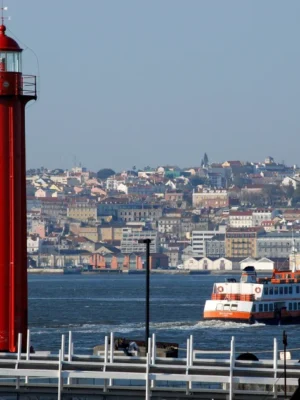
Unveiling Cacilhas: Exploring the Enchanting Side of Lisbon’s Coastline.
-

Cabo da Roca: Embracing Europe’s Westernmost Point and Nature’s Majestic Edge
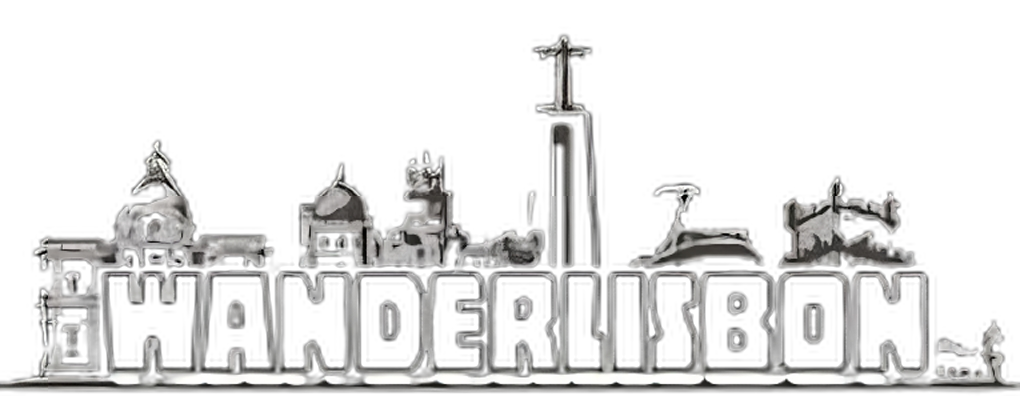
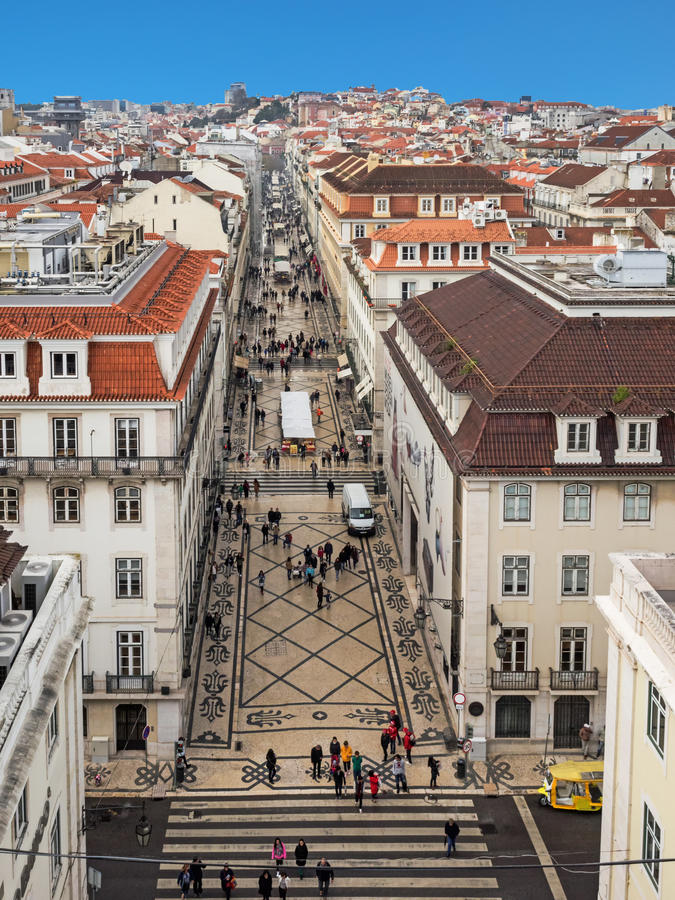
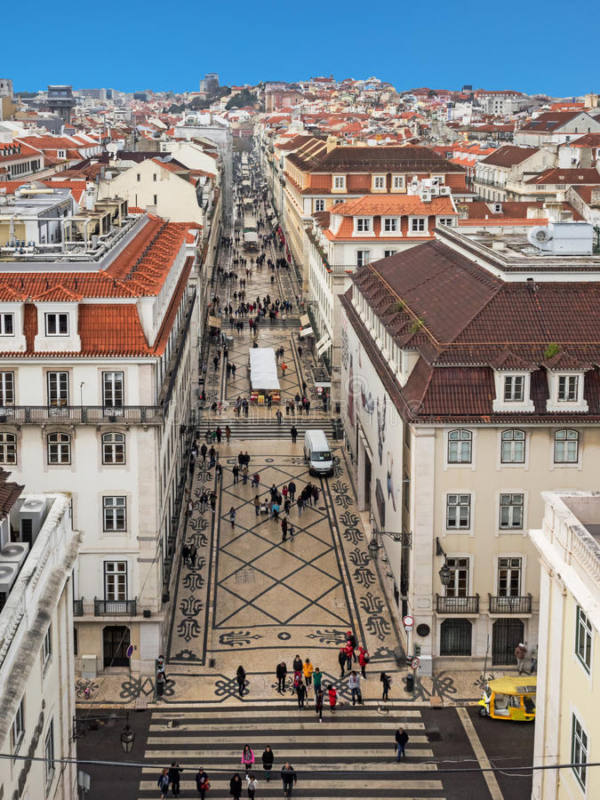
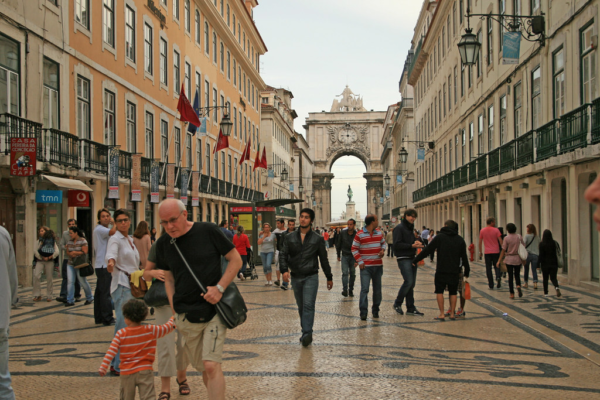
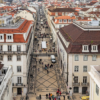



Reviews
There are no reviews yet.